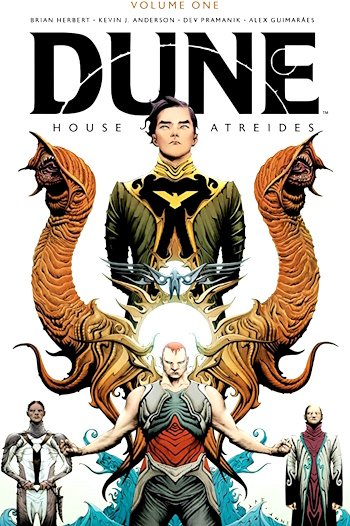Markkula was only thirty-three, but he had already retired after working at Fairchild and then Intel, where he made millions on his stock options when the chip maker went public. He was a cautious and shrewd man, with the precise moves of someone who had been a gymnast in high school, and he excelled at figuring out pricing strategies, distribution networks, marketing, and finance. Despite being slightly reserved, he had a flashy side when it came to enjoying his newly minted wealth. He built himself a house in Lake Tahoe and later an outsize mansion in the hills of Woodside. When he showed up for his first meeting at Jobs’s garage, he
Steve Jobs by Walter Isaacson 108
was driving not a dark Mercedes like Valentine, but a highly polished gold Corvette convertible. “When I arrived at the garage, Woz was at the workbench and immediately began showing off the Apple II,” Markkula recalled. “I looked past the fact that both guys needed a haircut and was amazed by what I saw on that workbench. You can always get a haircut.”
Jobs immediately liked Markkula. “He was short and he had been passed over for the top marketing job at Intel, which I suspect made him want to prove himself.” He also struck Jobs as decent and fair. “You could tell that if he could screw you, he wouldn’t. He had a real moral sense to him.” Wozniak was equally impressed. “I thought he was the nicest person ever,”
he recalled. “Better still, he actually liked what we had!”
Markkula proposed to Jobs that they write a business plan together. “If it comes out well, I’ll invest,”
Markkula said, “and if not, you’ve got a few weeks of my time for free.” Jobs began going to Markkula’s house in the evenings, kicking around projections and talking through the night. “We made a lot of assumptions, such as about how many houses would have a personal computer, and there were nights we were up until 4
a.m.,” Jobs recalled. Markkula ended up writing most of the plan. “Steve would say, ‘I will bring you this section next time,’ but he usually didn’t deliver on time, so I ended up doing it.”
Markkula’s plan envisioned ways of getting beyond the hobbyist market. “He talked about introducing the computer to regular people in regular homes, doing things like keeping track of your favorite recipes or balancing your checkbook,” Wozniak recalled. Markkula made a wild prediction: “We’re going to be a Fortune 500 company in two years,” he said.
“This is the start of an industry. It happens once in a decade.” It would take Apple seven years to break into
Steve Jobs by Walter Isaacson 109
the Fortune 500, but the spirit of Markkula’s prediction turned out to be true.
Markkula offered to guarantee a line of credit of up to $250,000 in return for being made a one-third equity participant. Apple would incorporate, and he along with Jobs and Wozniak would each own 26% of the stock.
The rest would be reserved to attract future investors.
The three met in the cabana by Markkula’s swimming pool and sealed the deal. “I thought it was unlikely that Mike would ever see that $250,000 again, and I was impressed that he was willing to risk it,” Jobs recalled.
Now it was necessary to convince Wozniak to come on board full-time. “Why can’t I keep doing this on the side and just have HP as my secure job for life?” he asked. Markkula said that wouldn’t work, and he gave Wozniak a deadline of a few days to decide. “I felt very insecure in starting a company where I would be expected to push people around and control what they did,” Wozniak recalled. “I’d decided long ago that I would never become someone authoritative.” So he went to Markkula’s cabana and announced that he was not leaving HP.
Markkula shrugged and said okay. But Jobs got very upset. He cajoled Wozniak; he got friends to try to convince him; he cried, yelled, and threw a couple of fits. He even went to Wozniak’s parents’ house, burst into tears, and asked Jerry for help. By this point Wozniak’s father had realized there was real money to be made by capitalizing on the Apple II, and he joined forces on Jobs’s behalf. “I started getting phone calls at work and home from my dad, my mom, my brother, and various friends,” Wozniak recalled. “Every one of them told me I’d made the wrong decision.” None of that worked. Then Allen Baum, their Buck Fry Club mate at Homestead High, called. “You really ought to go ahead and do it,” he said. He argued that if he joined Apple
Steve Jobs by Walter Isaacson 110
full-time, he would not have to go into management or give up being an engineer. “That was exactly what I needed to hear,” Wozniak later said. “I could stay at the bottom of the organization chart, as an engineer.” He called Jobs and declared that he was now ready to come on board.
On January 3, 1977, the new corporation, the Apple Computer Co., was officially created, and it bought out the old partnership that had been formed by Jobs and Wozniak nine months earlier. Few people noticed. That month the Homebrew surveyed its members and found that, of the 181 who owned personal computers, only six owned an Apple. Jobs was convinced, however, that the Apple II would change that.
Markkula would become a father figure to Jobs.
Like Jobs’s adoptive father, he would indulge Jobs’s strong will, and like his biological father, he would end up abandoning him. “Markkula was as much a father-son relationship as Steve ever had,” said the venture capitalist Arthur Rock. He began to teach Jobs about marketing and sales. “Mike really took me under his wing,” Jobs recalled. “His values were much aligned with mine. He emphasized that you should never start a company with the goal of getting rich. Your goal should be making something you believe in and making a company that will last.”
Markkula wrote his principles in a one-page paper titled “The Apple Marketing Philosophy” that stressed three points. The first was empathy, an intimate connection with the feelings of the customer: “We will truly understand their needs better than any other company.” The second was focus: “In order to do a good job of those things that we decide to do, we must eliminate all of the unimportant opportunities.” The third and equally important principle, awkwardly named, was
Steve Jobs by Walter Isaacson 111
impute. It emphasized that people form an opinion about a company or product based on the signals that it conveys. “People DO judge a book by its cover,” he wrote. “We may have the best product, the highest quality, the most useful software etc.; if we present them in a slipshod manner, they will be perceived as slipshod; if we present them in a creative, professional manner, we will impute the desired qualities.”
For the rest of his career, Jobs would understand the needs and desires of customers better than any other business leader, he would focus on a handful of core products, and he would care, sometimes obsessively, about marketing and image and even the details of packaging. “When you open the box of an iPhone or iPad, we want that tactile experience to set the tone for how you perceive the product,” he said.
“Mike taught me that.”
Regis McKenna
The first step in this process was convincing the Valley’s premier publicist, Regis McKenna, to take on Apple as a client. McKenna was from a large working-class Pittsburgh family, and bred into his bones was a steeliness that he cloaked with charm. A college dropout, he had worked for Fairchild and National Semiconductor before starting his own PR and advertising firm. His two specialties were doling out exclusive interviews with his clients to journalists he had cultivated and coming up with memorable ad campaigns that created brand awareness for products such as microchips. One of these was a series of colorful magazine ads for Intel that featured racing cars and poker chips rather than the usual dull performance charts. These caught Jobs’s eye. He called Intel and asked who created them. “Regis McKenna,” he was told. “I asked them what Regis McKenna was,” Jobs recalled, “and they told me he was a person.” When
Steve Jobs by Walter Isaacson 112
Jobs phoned, he couldn’t get through to McKenna.
Instead he was transferred to Frank Burge, an account executive, who tried to put him off. Jobs called back almost every day.
Burge finally agreed to drive out to the Jobs garage. “Holy Christ, this guy is going to be something else,” he recalled thinking. “What’s the least amount of time I can spend with this clown without being rude.”
Then, when he was confronted with the unwashed and shaggy Jobs, two things hit him: “First, he was an incredibly smart young man. Second, I didn’t understand a fiftieth of what he was talking about.”
So Jobs and Wozniak were invited to have a meeting with, as his impish business cards read, “Regis McKenna, himself.” This time it was the normally shy Wozniak who became prickly. McKenna glanced at an article Wozniak was writing about Apple and suggested that it was too technical and needed to be livened up. “I don’t want any PR man touching my copy,” Wozniak snapped. McKenna suggested it was time for them to leave his office. “But Steve called me back right away and said he wanted to meet again,” McKenna recalled.
“This time he came without Woz, and we hit it off.”
McKenna had his team get to work on brochures for the Apple II. The first thing they did was to replace Ron Wayne’s ornate Victorian woodcut-style logo, which ran counter to McKenna’s colorful and playful advertising style. So an art director, Rob Janoff, was assigned to create a new one. “Don’t make it cute,”
Jobs ordered. Janoff came up with a simple apple shape in two versions, one whole and the other with a bite taken out of it. The first looked too much like a cherry, so Jobs chose the one with a bite. He also picked a version that was striped in six colors, with psychedelic hues sandwiched between whole-earth green and sky blue, even though that made printing the
Steve Jobs by Walter Isaacson 113
logo significantly more expensive. Atop the brochure McKenna put a maxim, often attributed to Leonardo da Vinci, that would become the defining precept of Jobs’s design philosophy: “Simplicity is the ultimate sophistication.”

























